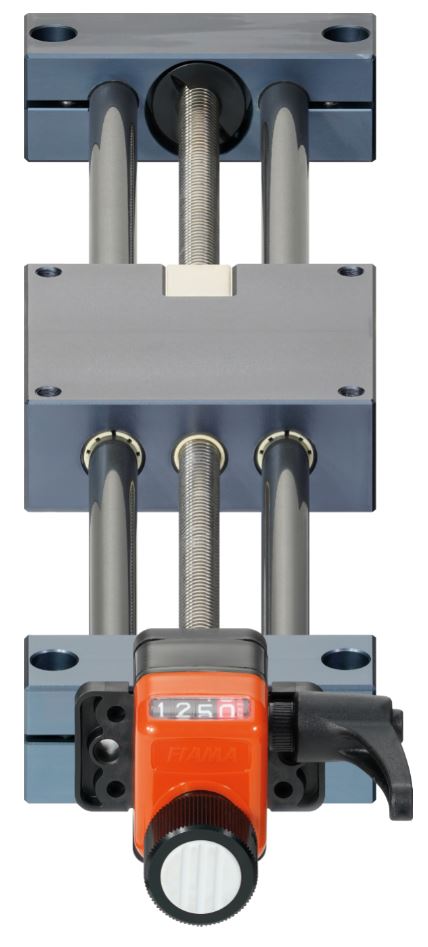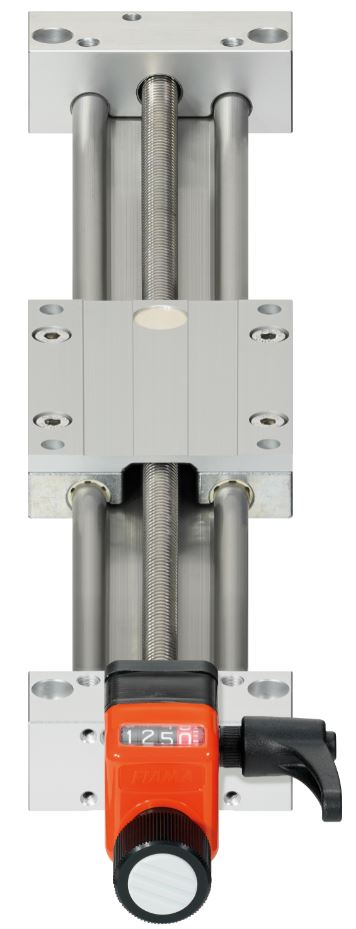Sensor adjustment with plain bearing technology: easy and reproducible
Bastian Mehr | 8. April 2020
If you are looking for a simple linear adjustment for sensors or cameras that are usually secondary, you will find a number of possible solutions. They should be simple, reproducible and cost-effective. What is the right system for me if I want to integrate it without great design effort?
What are my requirements?
If a sensor or camera is to be adjusted, there are a few clear requirements that the system must fulfil. Setting a sensor so that it meets the relevant needs should be as easy as possible. Adjustment must be reproducible in various formats, and the system should be flexible and easy to integrate into the machine. It should also be maintenance-free. For applications that tend to be secondary in the machine, this is especially likely to be neglected. But dependability cannot be dispensed with.

The right system for any application
This is exactly the task we have taken on. We offer a number of solutions from our drylin® linear technology construction kit. Here, we have access to a wide variety of components. Because everything is based on a modular system, you can build your own systems from individual components or use ready-to-install complete solutions. There are many different materials and material combinations for various application areas. Most systems are based on aluminium components in connection with high-performance polymers. Stainless steel designs are also no problem if greater corrosion and chemical resistance is necessary. All of the different variants have one thing in common: the components used make them maintenance-free and lubrication-free.
In complete solutions, the SLW or SHT series are used. They are just the right thing for simple, stable adjustments for cameras and sensors. The linear systems can be configured individually for the relevant requirements. This covers simple adjustment with trapezoidal thread and hand wheel adjustments and fully automated adjustments with a motorised drive. A number of configurations can be used to design a suitable system and calculate the service life for the application in question. Suitable CAD data is available online.

https://www.igus.eu/info/drive-technology-drive-technology-productfinder-lin?L=en
What must we watch out for?
There are also a few details that must be taken into account with a plain bearing linear system. In a linear system with polymer bearings, the potential to expand must be minimal. So, if the application is a dynamic motor in which the process generates oscillations, those oscillations are transferred to the sensor. There are a variety of bearing solutions to prevent or minimise that. One is to select a tighter tolerance field for the liners. Another is to use adjustable pillow blocks to set the necessary clearance individually. The masses to be moved and their centres of gravity must also be taken into account. If these factors are neglected during design and dimensioning, the linear system might be sluggish. To avoid that and select just the right system, we offer a number of tools.
https://www.igus.eu/info/company-online-tools?L=en#section_40
We would be happy to support you in designing the right linear system for your application.
https://www.igus.eu/info/virtual-visit

Do you have any questions?
Send us your contact request here
Our experts will help find a solution for you.
